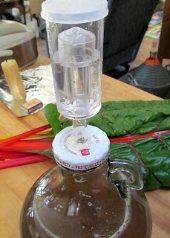
 3
3




 2
2




Check out Redhawk's soil series: https://permies.com/wiki/redhawk-soil








I don't use plastic bags because I don't want highly acidic liquids eating up the plastic in the food that I'm going to eat.
 4
4




 2
2














 3
3




www.ultimatepicklejar.com




www.ultimatepicklejar.com
 2
2




 3
3




Weeds are just plants with enough surplus will to live to withstand normal levels of gardening!--Alexandra Petri
 1
1




Invasive plants are Earth's way of insisting we notice her medicines. Stephen Herrod Buhner
Everyone learns what works by learning what doesn't work. Stephen Herrod Buhner

|
So then I told Joseph Stalin to piss off! Remember that tiny ad?
The new permaculture playing cards kickstarter is now live!
https://www.kickstarter.com/projects/paulwheaton/garden-cards
|







